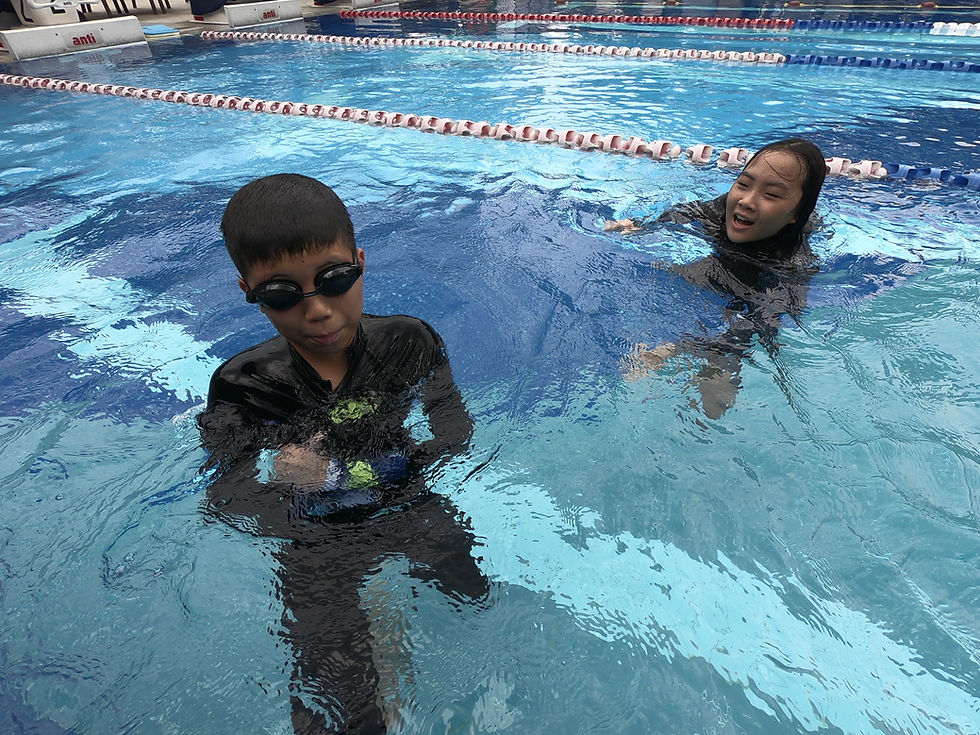How Swimming Helps ADHD Teens Manage Stress
- SG Sink Or Swim

- Aug 9
- 2 min read

For teenagers with Attention-Deficit/Hyperactivity Disorder (ADHD), daily life can feel like a constant balancing act — juggling academics, social pressures, extracurricular activities, and the unique challenges that come with ADHD. Stress often builds quickly, and finding healthy outlets is essential. One highly effective tool for both physical and mental well-being is swimming.
Whether it’s a few casual laps after school or structured swim team training, swimming offers a unique blend of exercise, sensory regulation, and mental clarity that can help ADHD teens manage stress in a sustainable way.
🧠 Why Swimming Works So Well for ADHD Stress Management
Swimming isn’t just exercise — it’s a full-body and full-mind experience that addresses many of the factors that contribute to stress for teens with ADHD.
1. Rhythmic Movements Encourage Focus
The repetitive motion of strokes, kicks, and breathing creates a rhythmic pattern that can calm a racing mind. Much like meditation, this rhythm fosters mindfulness and focus, helping ADHD teens feel more centered.
2. Sensory Regulation Through Water Pressure
The gentle, even pressure of water provides a form of deep touch pressure therapy, which has been shown to calm the nervous system and reduce anxiety in individuals with ADHD and sensory sensitivities.
3. Boosting Mood Through Endorphins
Like all aerobic exercise, swimming releases endorphins — the brain’s natural “feel-good” chemicals — which can ease stress, improve mood, and reduce irritability.
4. A Distraction-Free Environment
Underwater, external noise and visual distractions are minimized. For ADHD teens who often struggle with overstimulation, this quiet space can offer a much-needed mental break.
🏊 How to Make Swimming a Stress-Relief Habit for ADHD Teens
1. Start with Short, Enjoyable Sessions
Long training sessions can feel overwhelming. Begin with 15–20 minutes of relaxed swimming and gradually extend the time as comfort and enjoyment grow.
2. Focus on Fun, Not Just Performance
Games like water polo drills, kickboard relays, or underwater challenges can keep swimming enjoyable while still providing a workout.
3. Incorporate Breathing Exercises
Practicing controlled breathing while swimming (such as in freestyle or backstroke) not only improves performance but also mirrors calming breathing techniques used in mindfulness.
4. Use a Structured Routine
Consistent schedules help ADHD teens thrive. Swimming on set days each week provides a sense of predictability, which can lower anxiety.
5. Encourage Social Swimming Opportunities
Joining a swim club or group lessons can build social connections — a key factor in reducing stress and boosting self-esteem.
💡 Additional Benefits Beyond Stress Relief
Improved sleep quality, which directly impacts focus and mood.
Better physical fitness, boosting overall resilience to stress.
Increased self-confidence from mastering swimming skills.
🌟 Final Thoughts
Swimming offers ADHD teens a rare combination of physical activity, sensory comfort, and mental calm. By making swimming a regular part of their lives, they can not only manage stress more effectively but also improve focus, self-confidence, and emotional well-being.
For parents and coaches, the goal isn’t just to train faster swimmers — it’s to create a safe, supportive space where ADHD teens can thrive, both in and out of the pool.





Comments